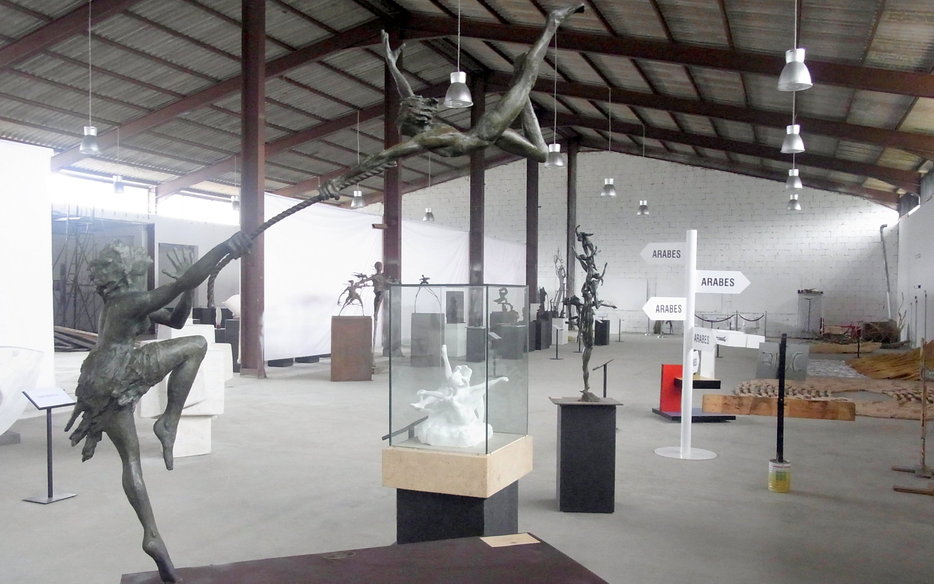Mecca for Young and Older Art Lovers
The location couldn’t be better: Alita’s Modern And Contemporary Art Museum (MACAM) is perched up on a green hill, with spectacular views: Beirut in the distance, Byblos and the Mediterranean down the coast, and flanked by the Adonis Valley. In Arabic, the acronym incidentally can refer to a shrine or if used in connection with a person, it is used for a spiritual, revered individual.
In the absence of a Lebanese National Gallery, the old factory-turned-museum site is a visionary undertaking. It celebrates Lebanese art and provides local artists a phenomenal platform to showcase their works and allows local and foreign art lovers to appreciate it.
Inaugurated in June 2013, with over 400 sculptures by over 60 artists on show, MACAM was able to grant visitors a representative view of each artist’s work from the day it opened its doors.
Set on preserving Lebanon’s cultural and artistic heritage, art critic Cesar Nammour felt the need to establish a museum that would house and showcase installation art. As the project took shape, the scope was broadened to include modern and contemporary art. Especially installation art tends to not be preserved and exhibited once it has been showcased.
Realizing that it was necessary to preserve and exhibit these artworks, Nammour and his partner Gabriele Schaub decided to look for a space to display dismantled installations. The chosen site in Alita consists of two huge industrial spaces, referred to as Hall 1 and 2, which have kept their industrial feel. While Hall 1 contains installations, Hall 2 sculptures.
MACAM is an absolute treat and a “must see”, providing a unique opportunity to appreciate the significant output of modern and contemporary local sculptors, ceramicists, and installation artists.
The site is a perfect weekend outing for the entire family, allowing art lovers to (re)discover local artists in various media, ranging from stone, metal, to wood, but also significant installation art. There are also activities for younger audiences. The museum indeed often hosts entire school classes as well as architecture, design and art students.
You can find information on how to reach the museum, which is about 35-45min drive north of Beirut and 7km up from the highway turn-off in Qartaba on their website.











